Statement:
Inspired by the experience of peer pressure, high standards and seemingly false perception of the outside world as young students, Facets is a shadow art installation that explores the concept of how people react and act differently according to social norms and standards under various situations. How does the persona we choose to put on under the influence of social standards relate to our own self? If we piece out ourselves segments by segments, where is the real, complicated and authentic self?
The installation consists of three mini robot “scenes” that describes the three major facets of a person, work, family, and social represented correspondingly by hand, puzzle and masks, as well as a composite robot that represents the whole person. While the shadow represents various personas people put on when interacting with different environments, the robots in front of the screens represent the real world, and they interact with each other to complete a unify scene for each situation. Displayed in a 360 degree setting, the audience are encouraged to explore each mini robots in the flow they want but reveal the composite as the last section of the installation for the audience to see how each scene relates to the composite robot.
Reflection:
The project really reminds us of the concept in acting where “emotions comes from motions”. The general set up of a piece could only suggest a limited amount of information and mood for the performance, and most of the emotions are communicated to the audience through carefully designed behaviors. Mood could spring from sets of conscious choices even though it seems to happen instantaneously during that moment. The movement in our project is more scripted and repetitive, yet it could still leave space for interpretation and trigger reflection and emotional reaction for the audience. Therefore, in future art practices, in addition to “training” the robots to behave and react with the surroundings with a given base foundation, artists and engineers could also focus on exploring the limits and possibilities of actions for machines. The boundary of robotics behavior is not limited by the foundational technology but the edge of design intention and imagination.
On the other hand, the spotlight group demonstrated another possibility of robotics performance. Personal characteristics could be added to still ordinary objects with the use of animated behaviors and creates a novel and unexpected experience for the audience. The interactive motion and the immersive environment adds more playfulness as well as audience presence to the entire experience. The twist of characters and dual motion allows the audience to become more aware of both their own and the robot’s actions, and gives the robot more autonomy as this challenges original thinking of robots as machines that acts upon humans’ requirements and needs.
Discussion:
The overall production was quite successful and we were able to execute most of our original intention. Due to the time limit, we stuck with the bare wood aesthetic for the overall production, with little details such as feathers and glitter added to the robots to show the differences between “facets of you” and “composite you”.
One of the main challenges that we faced was trying to balance the trio mask robot on the motor after we assembled it. We did not have time to design and engineer a base for the motor to balance out the robot so we had to solve the issue with black gafe tape, which looked a bit janky, but added a level of organic and imperfect quality to the piece per audience interpretation.
Another challenge we had was making some last minute adjustments to the install. The final presentation did not have enough space for the audience to look at the composite robot from right behind and due to limited lighting options, it was lit with a side light, which is a lot brighter and caused harsher shadows. However, the close proximity of the composite robot to the rest of the installation helped the audience to view them as one piece and draw connections with each scene.
In terms of robotic motion, we were able to program most of the motion we storyboarded for each scene. We carefully designed each scene so that they focused on one planar motion. The work scene had hands waving up and down; the family scene had puzzles rotating and tracking left and right; and the social scene had masks spinning in and out of the light. These choices was well executed and successfully conveyed our main original intention to the audience even with various detailed interpretation.
The only motion we were not able to program and see it for the final piece was trying to have the family scene robots stop and hold once they rotate and slide into their matching position to make the statement more obvious. There were also two matching positions and only one of them was obvious enough to the audience. The three dimensional linkage for the small dancing mask robot in front of the screen was a happy accident during production. The original intent was to have the masks dance and bounce in a more planar direction but with the way the piano wires were attached, they were a bit out of control and twisted a lot more. We left them the way they were as they added chaotic and drunk characteristics of those robots and it helped convey the mood of the scene.
Our biggest take away from this process was to embrace the changes and happy accidents in details that happen during production, while sticking onto the main idea and concept. There were several iterations of the piece when we storyboarded it, but once we had a workable solid idea we stuck with the format, while allowing small changes when putting the piece together in production. Additionally, for the purpose of installation with a clear emotion and storyline, we learned to make choices to help the audience focus on one effect at a time.
Production Contribution:
- All – storyboard, install
- Mingchi – “Family” and “Social” scene programming
- Sana – “Work” Scene design, fabrication and programming
- Jessica – “Family” Scene design, fabrication and programming
- Ying – “Social” Scene design and fabrication, production install and documentation
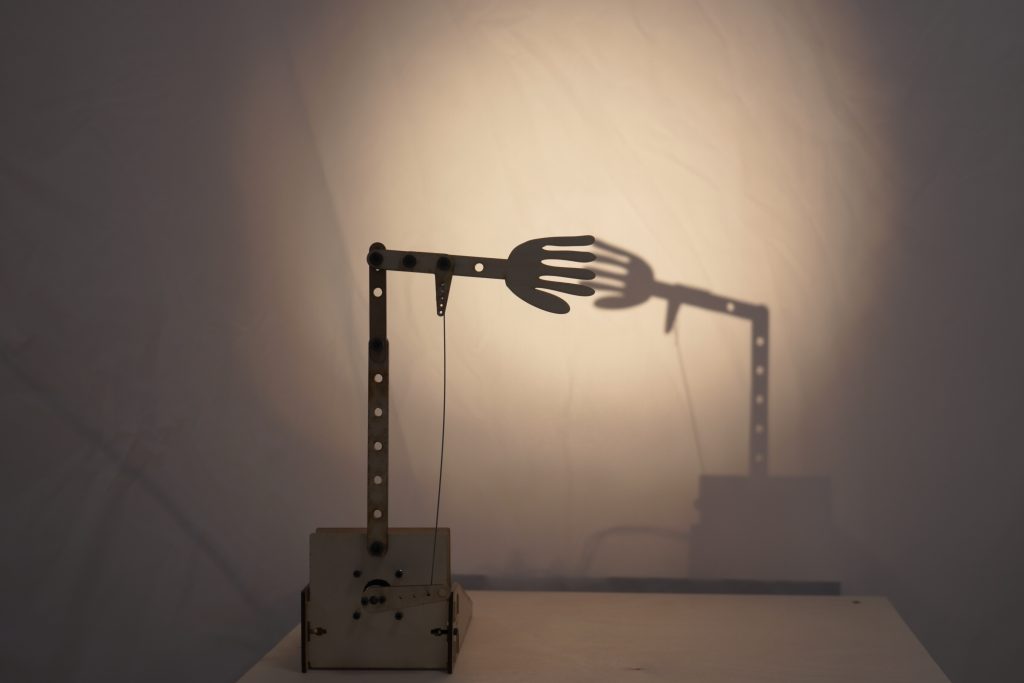
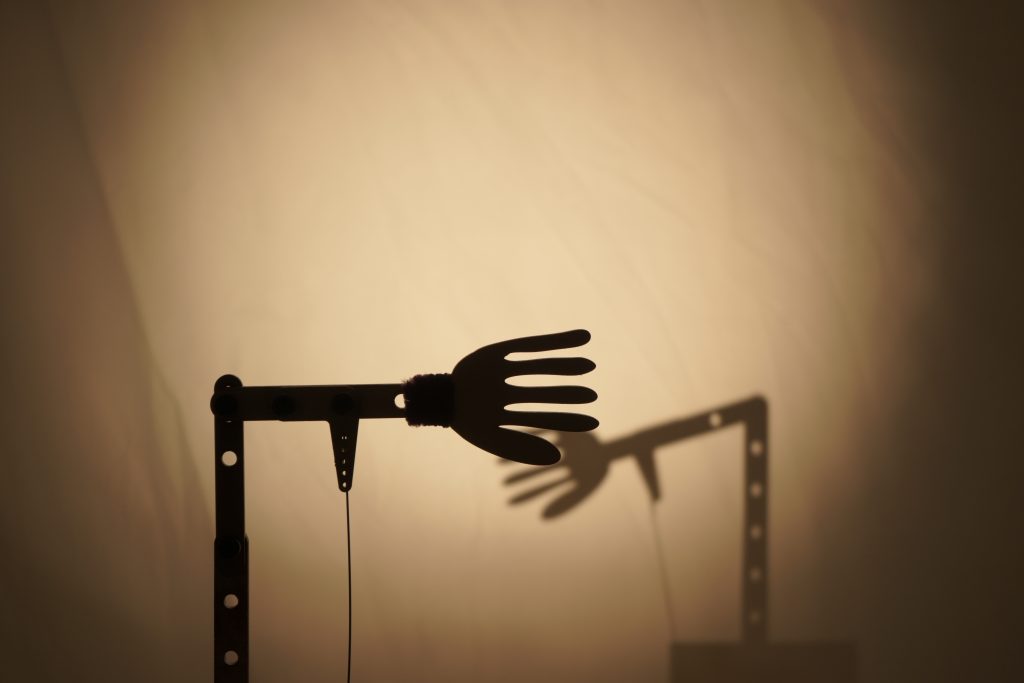
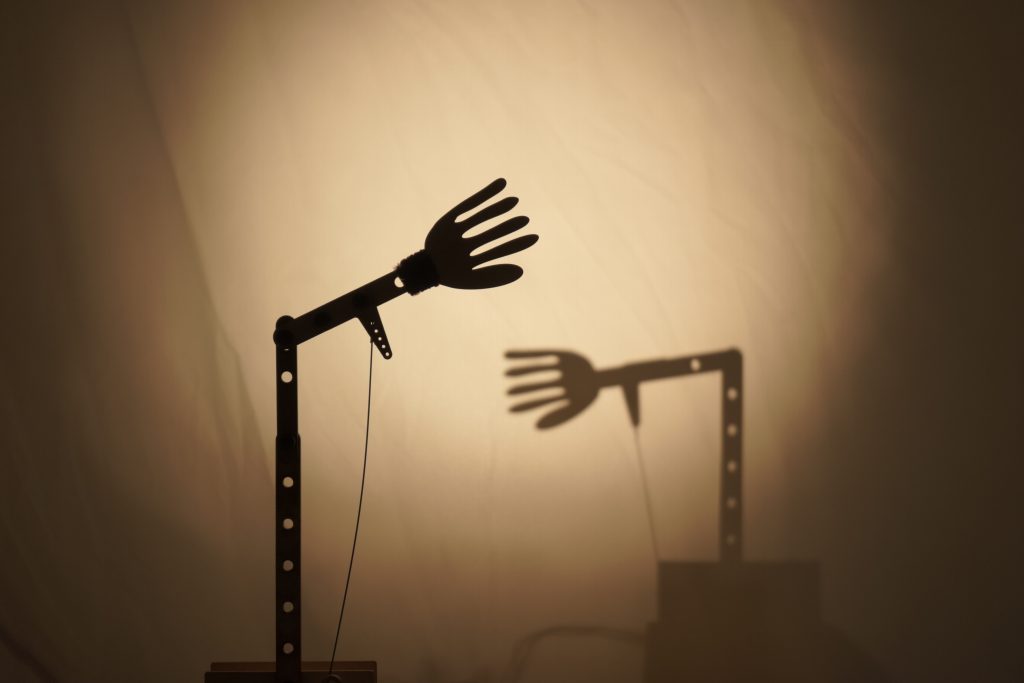
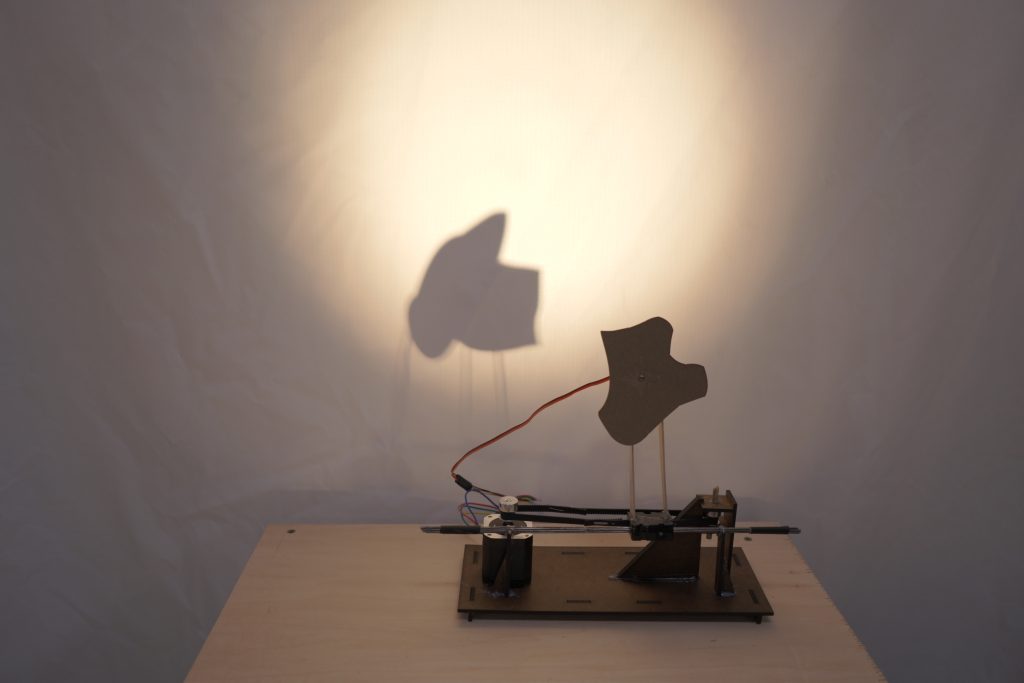


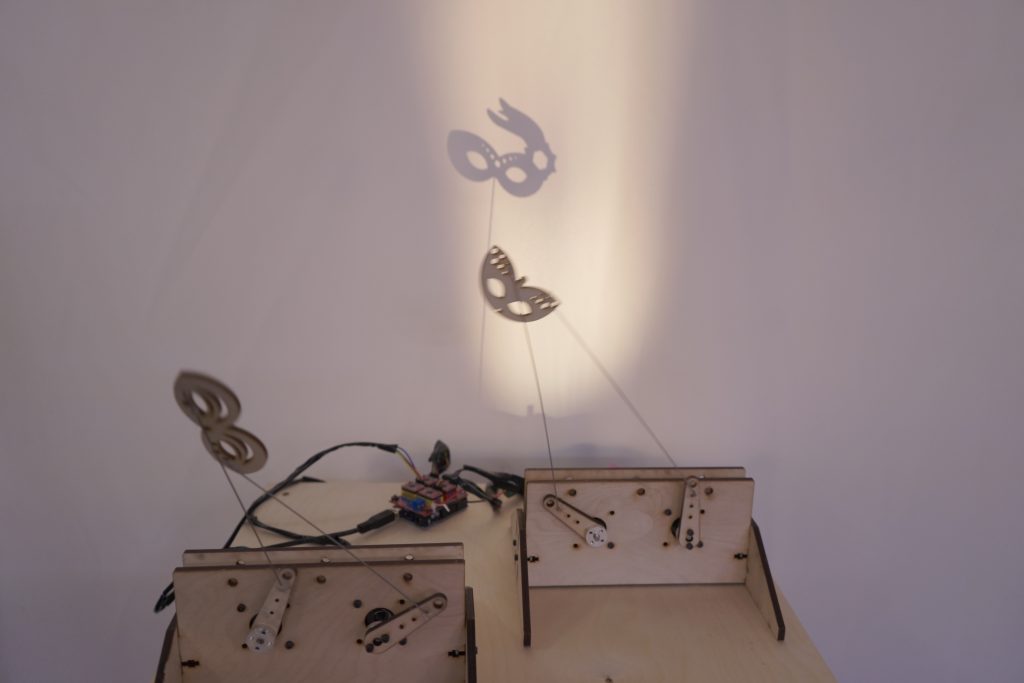
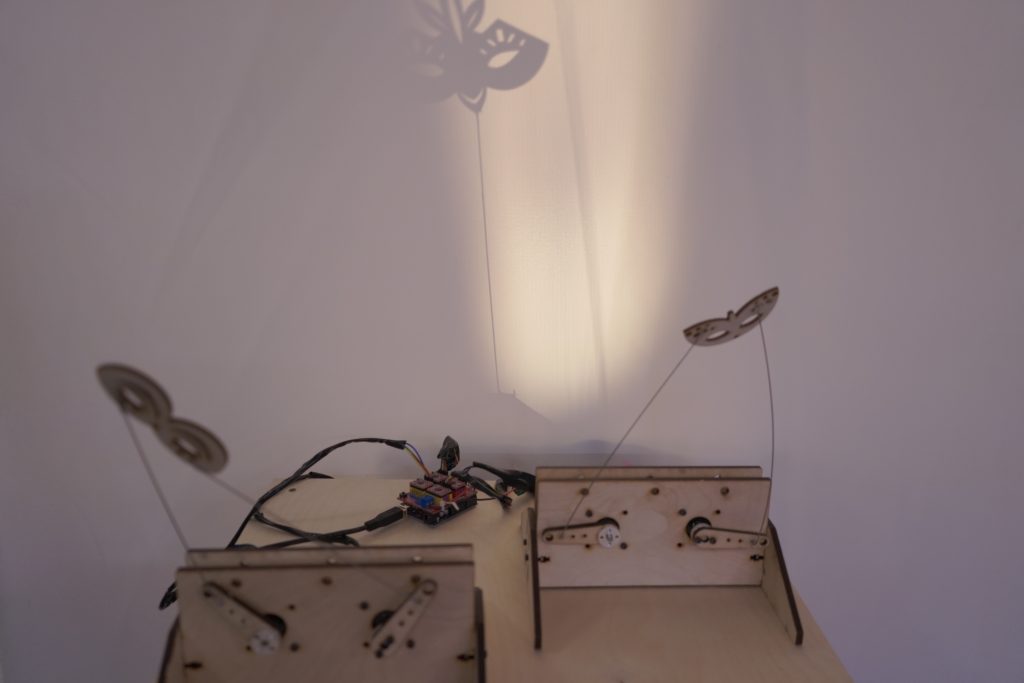




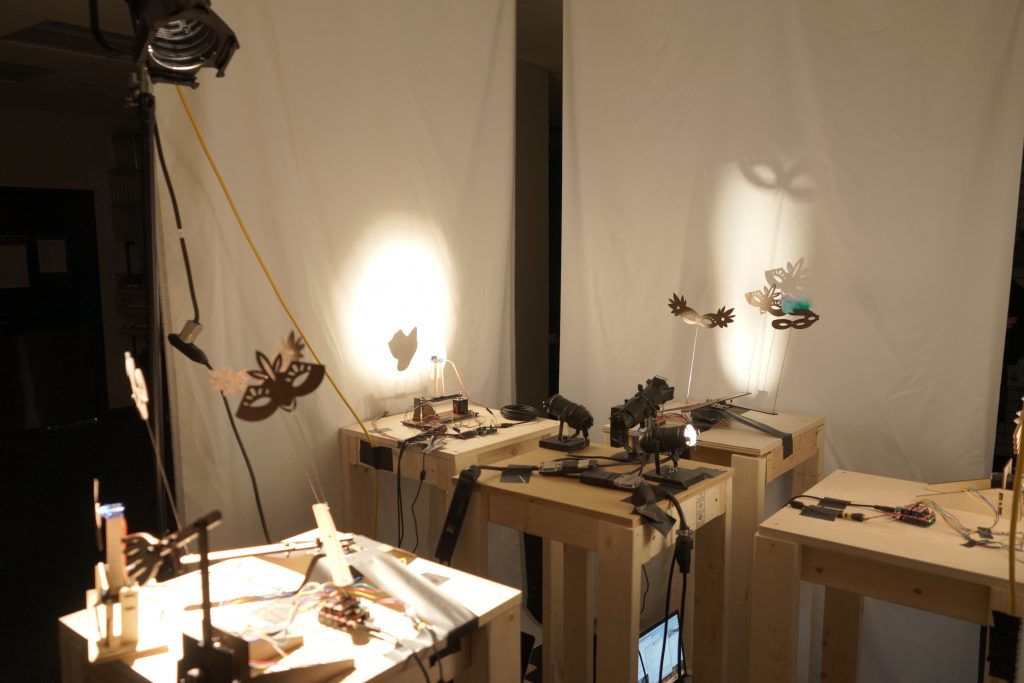
Comments are closed.